Mastering minor keys will help add depth and mood to your playing. Today we will focus our attention on the chords of C minor. We will look at what notes make up the key of C minor and how those notes work together to form chords.
Let’s get into it!
C Minor Chords
The C minor chords are the chords that are built using the notes in the C minor scale; C – D – Eb – F – G – Ab – Bb – C.
What are the chords in the key of C minor?
The chords in the key of C minor are:
- Cm (i)
- Ddim (ii°)
- Eb (III)
- Fm (iv)
- Gm (v)
- Ab (VI)
- Bb (VII)
*diminished chords (dim, for short) are denoted by the degree symbol (ex: B° = Bdim) The formula for a diminished chord is I – bIII – bV.
What are the notes of the C Minor scale?
The formula for finding the notes in the D minor scale, or any minor scale, is:
| I (Tonic) | II (Supertonic) | III (Mediant) | IV (Subdominant) | V (Dominant) | VI (Submediant) | VII (Subtonic) |
| Whole | Half | Whole | Whole | Half | Whole | Whole |
| C | D | Eb | F | G | Ab | Bb |
Whole – Half – Whole – Whole – Half – Whole – Whole
To build a C minor scale you start at the tonic note, which is C and move up a whole step to D, then a half step to Eb, and so on. It will look like this:
- C to D is a whole step
- D to Eb is a half step
- Eb to F is a whole step
- F to G is a whole step
- G to Ab is a half step
- Ab to Bb is a whole step
- Bb back to C is a whole step
Relative and Parallel Keys
Parallel keys are those that share a tonic, or root note, and have similar names. For example, the parallel key to C minor is C major, D minor is D major, E minor is E major, etc. To turn the key from minor to major you simply sharpen the III, VI, and VII notes.
Starting with the notes of C minor, transposing to major will look like this:
- C (I)
- D (II)
- Eb (III)
- F (IV)
- G (V)
- Ab (VI)
- Bb (VII)
If we sharpen the III, VI, and VII to turn the key major, it will look like this:
- C (I)
- D (II)
- E (#III)
- F (IV)
- G (V)
- A (#VI)
- B (#VII)
Relative keys are even easier to remember. A relative key, or relative major in this case, shares ALL of the same notes. They differ in that they do not share the same tonic.
The relative major to C minor is Eb major. We know all of the notes of C minor, to get to Eb Major, you just start at the Eb note. Here’s an example:
- Eb (I)
- F (II)
- G (III)
- Ab (IV)
- Bb (V)
- C (VI)
- D (VII)
Remember:
| Parallel Key means you either sharpen or flatten the III, VI, & VII notes but they share the same tonic. |
| Relative Key means they share the same notes but each have a different tonic. |
How do I find C Minor chords?
So, chords are built using what are known as triads. Triads are simply a group of three notes played together; the I, III/bIII, and V notes, to be specific. A major triad uses the I – III – V formula while a minor triad uses I – bIII – V.
If you want to build to use this formula, you can reference the chart below, pick a note (that’s your I), count up three notes (that’s your III), then move up another two notes (that’s your V chord). A minor chord is the same with a flat III.
To find the I – III/bIII – V notes you have to map them out.
| I | II | III | IV | V | VI | VII |
| C | D | Eb | F | G | Ab | Bb |
To build chords using the C minor scale you will only use these notes. The formula to figure out the chords is i – ii° – III – iv – v – VI – VII.
So the chords of the key of C minor will look like:
| i | ii° | III | iv | v | VI | VII |
| Cm | Ddim | Eb | Fm | Gm | Ab | Bb |
The reason we see both major and minor chords in a minor key is a pretty simple explanation. We can only use the notes within the key scale to build our chords. Let’s use Eb major as an example.
Since it’s a minor key, you may think it should be a minor chord. However, the notes in Ebm are Eb – Gb – Bb. We know both the Eb and Bb notes are in this key, but not Gb. The closest thing to it is a G note. Eb – G – Bb are the notes in Eb major.
One additional chord building note. Diminished chords are unique in their structure. They, like minor chords, have a bIII. But they also have a bV note, as well. So, for instance, a Ddim, or D°, uses the notes D – F – Ab.
C Minor Chords (Diagrams)
Now that you know how to build the chords, here is what they look like on the keyboard. You can use these C minor chord diagrams to get started playing.
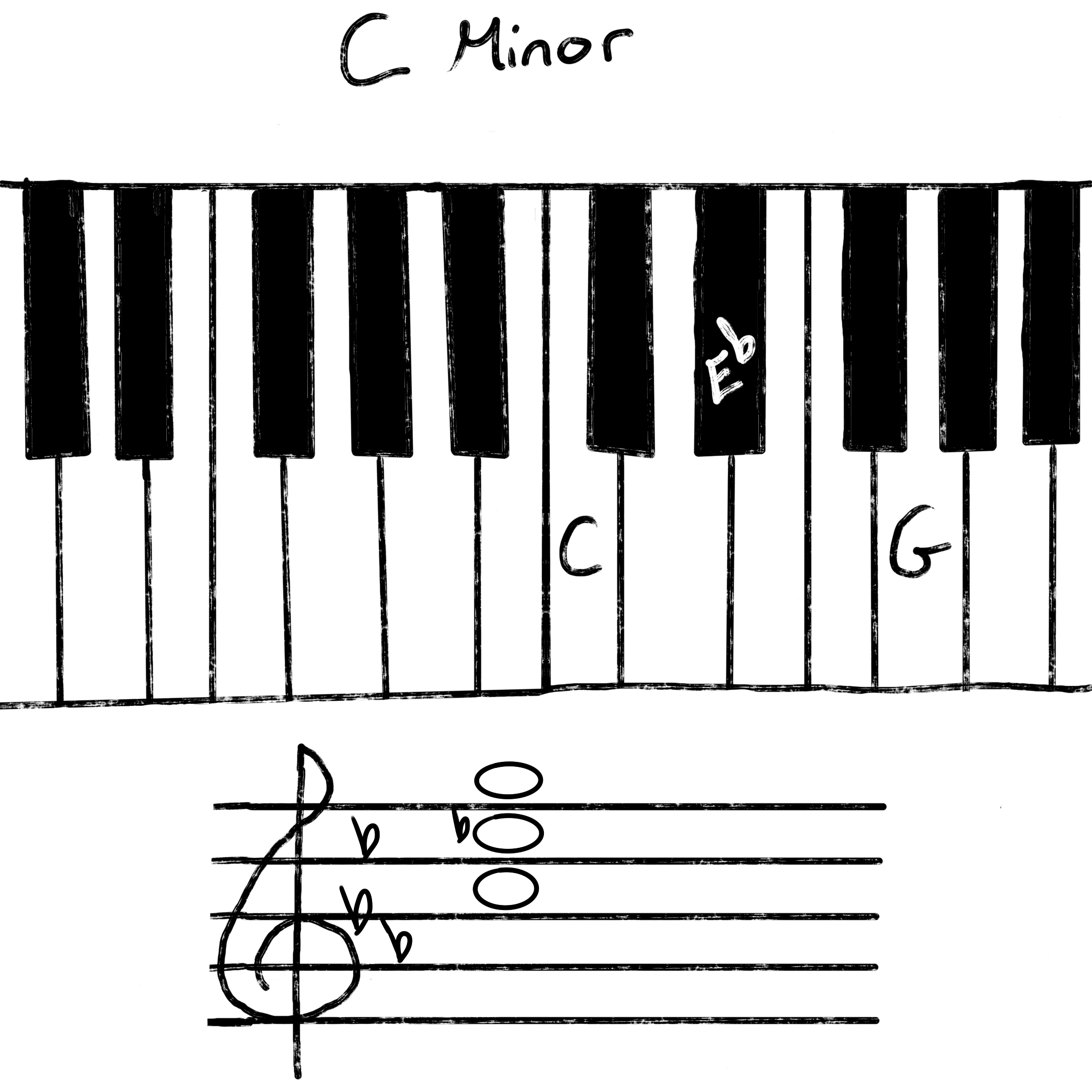
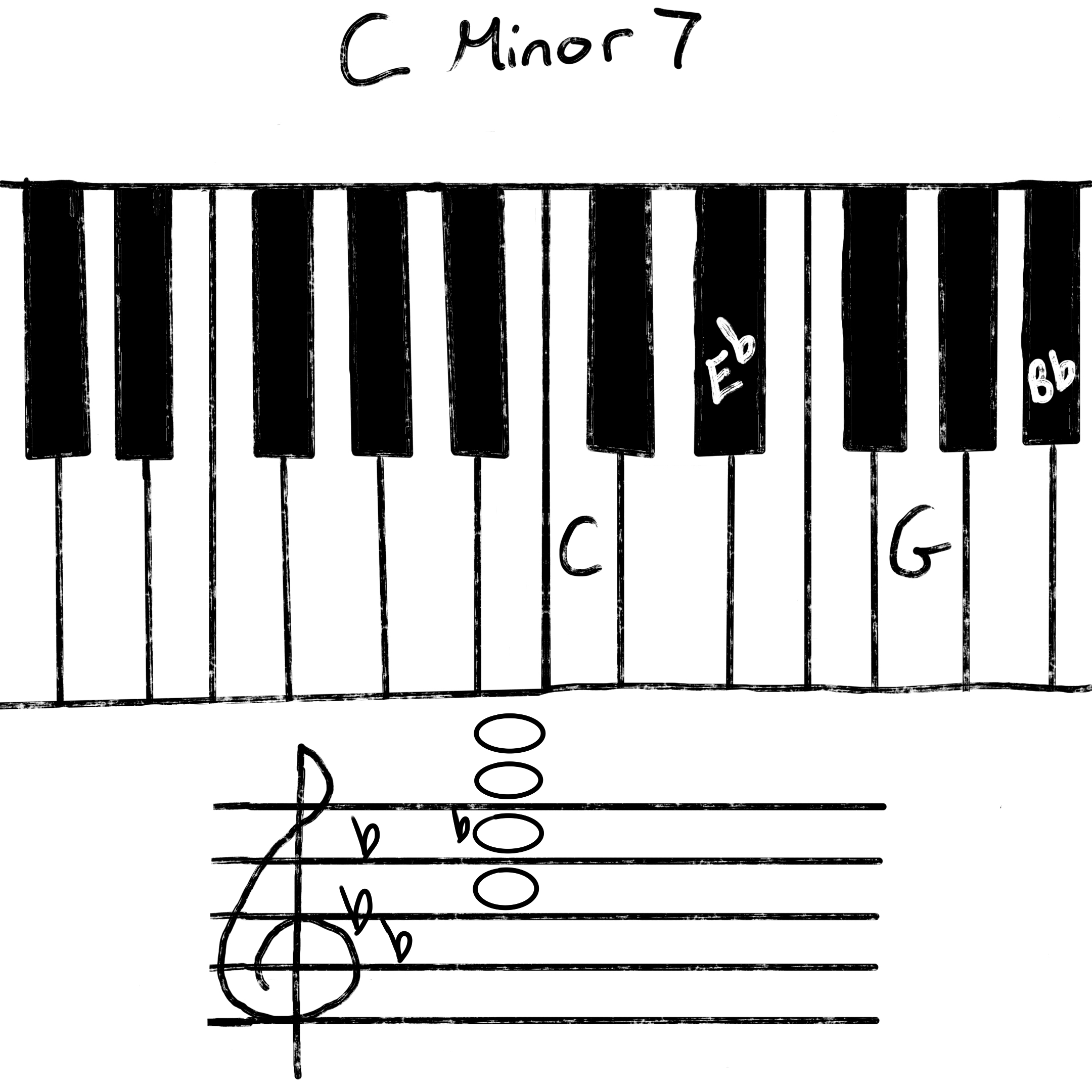
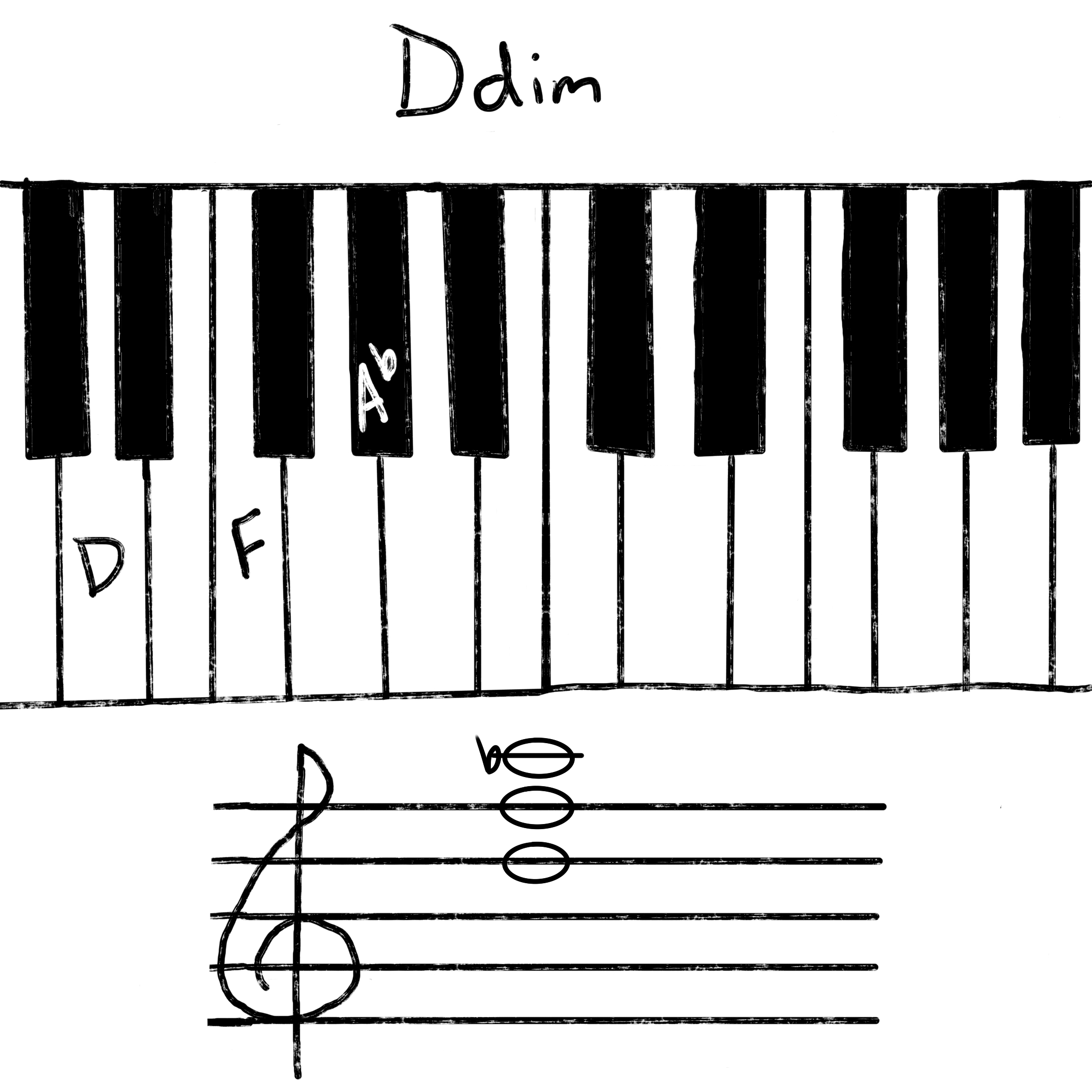
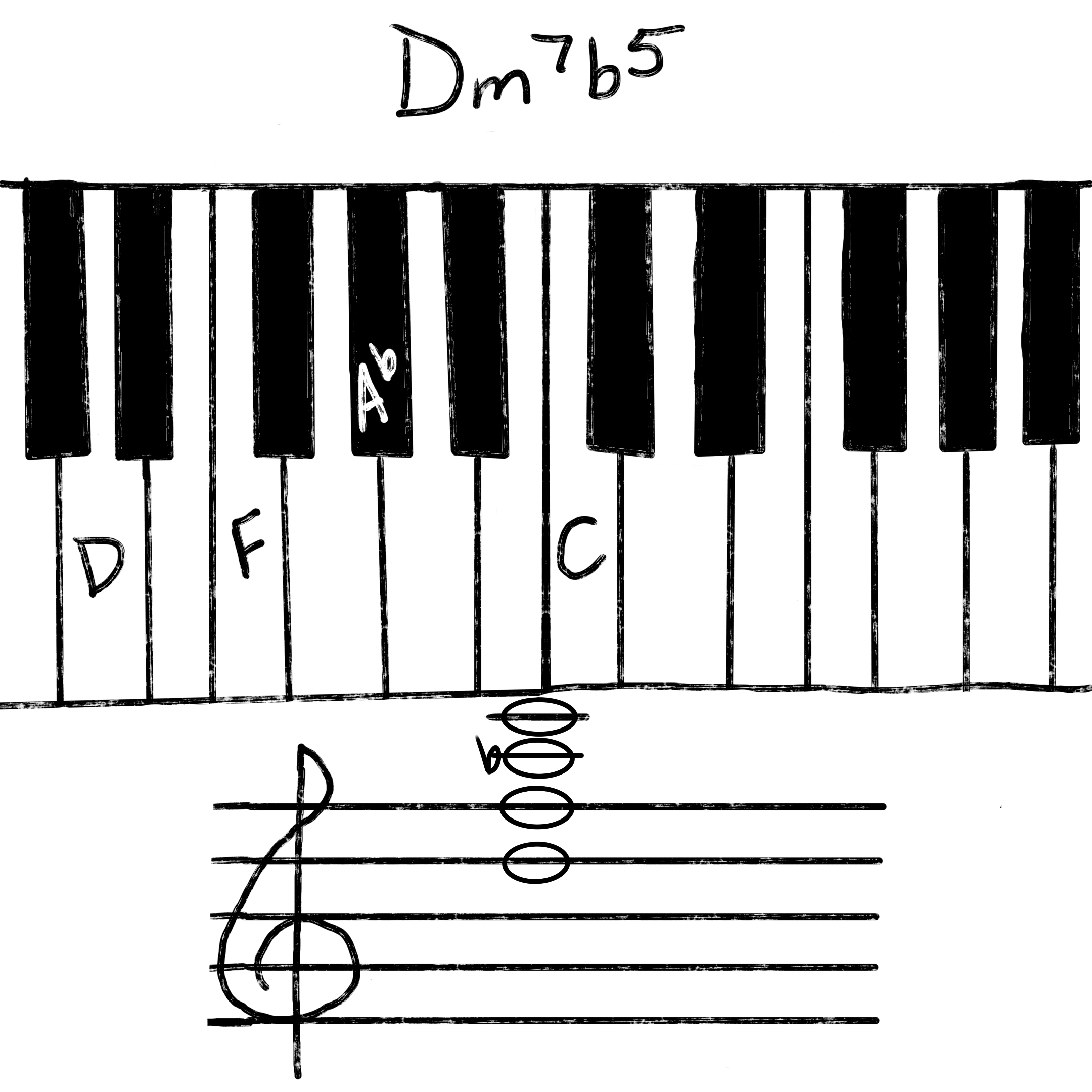
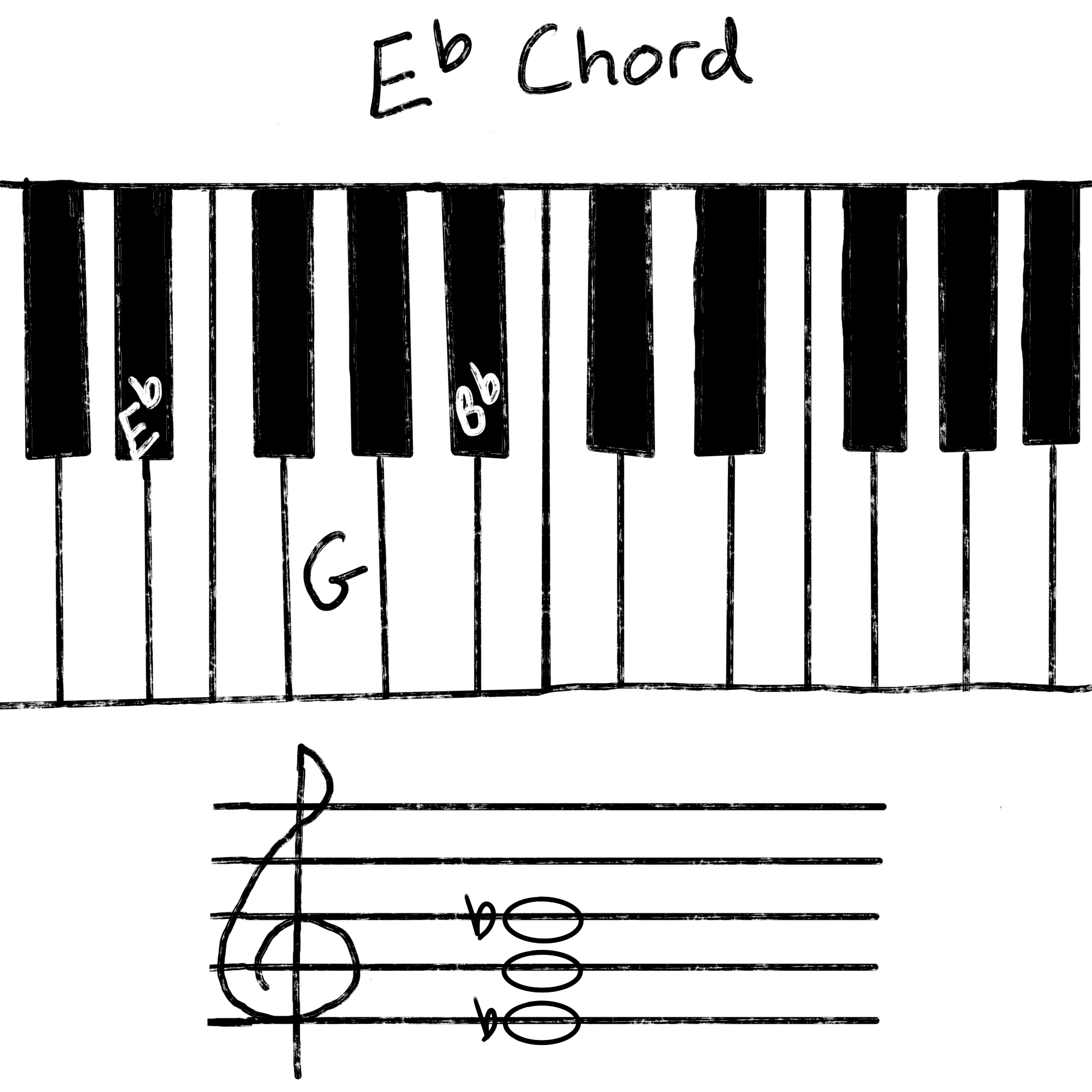
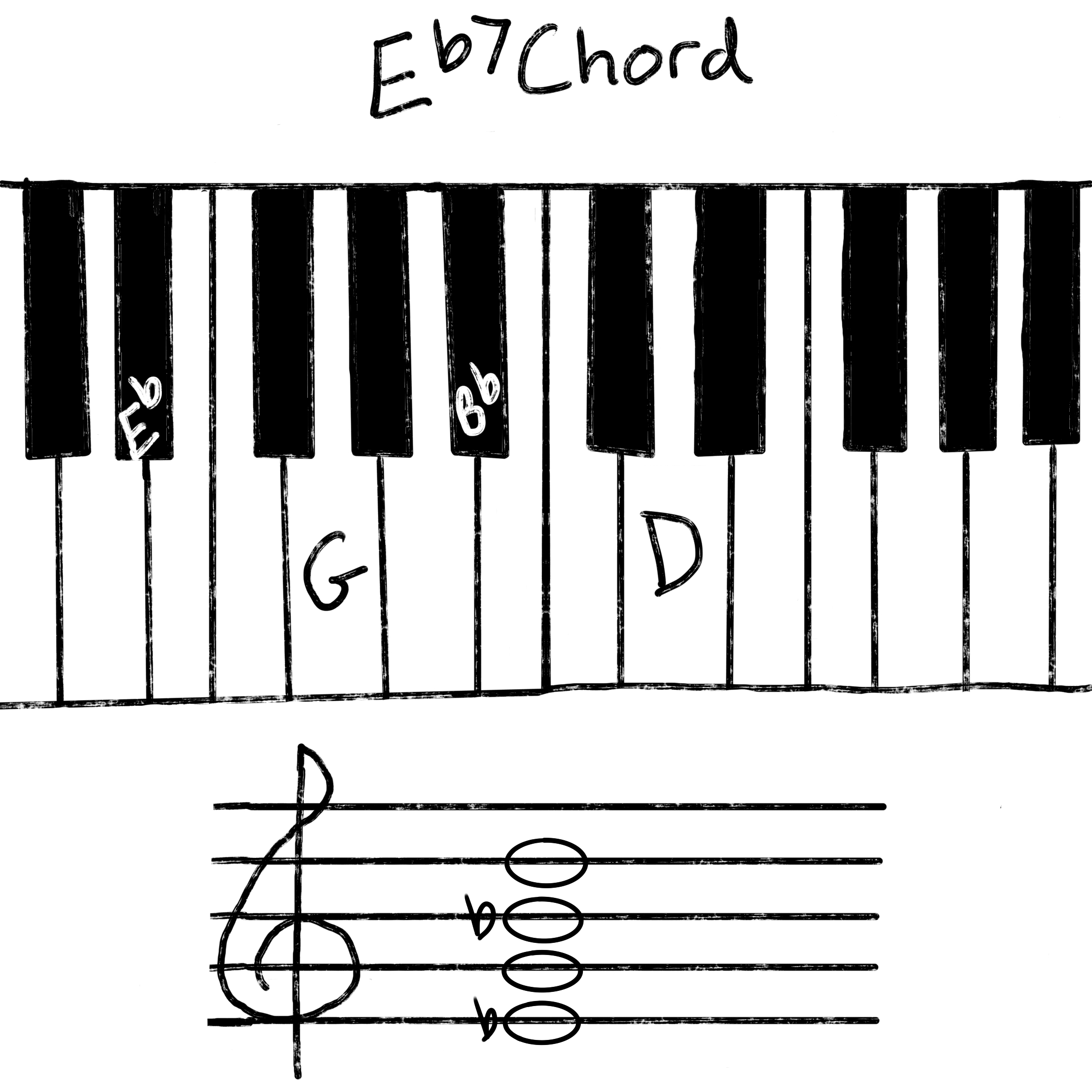
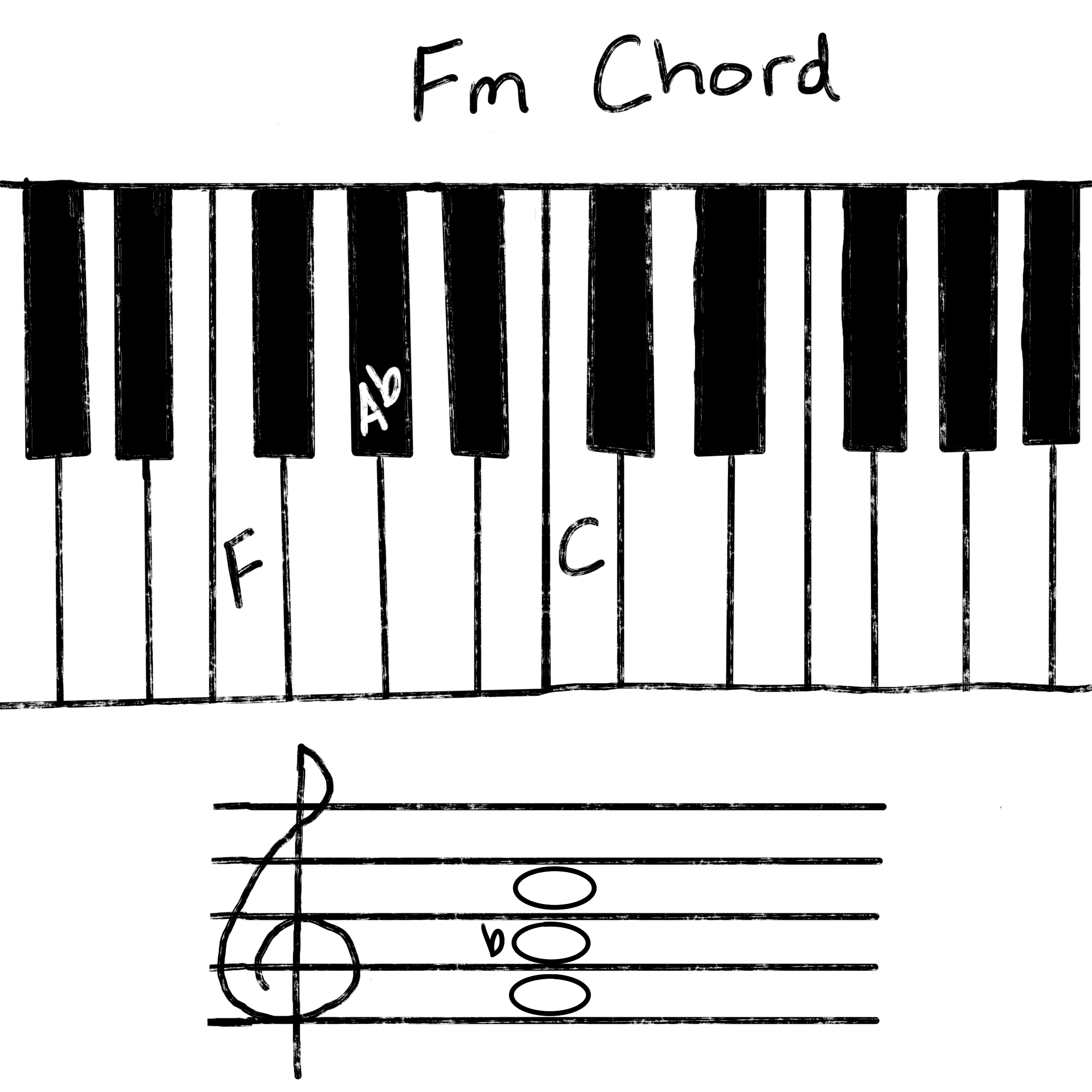
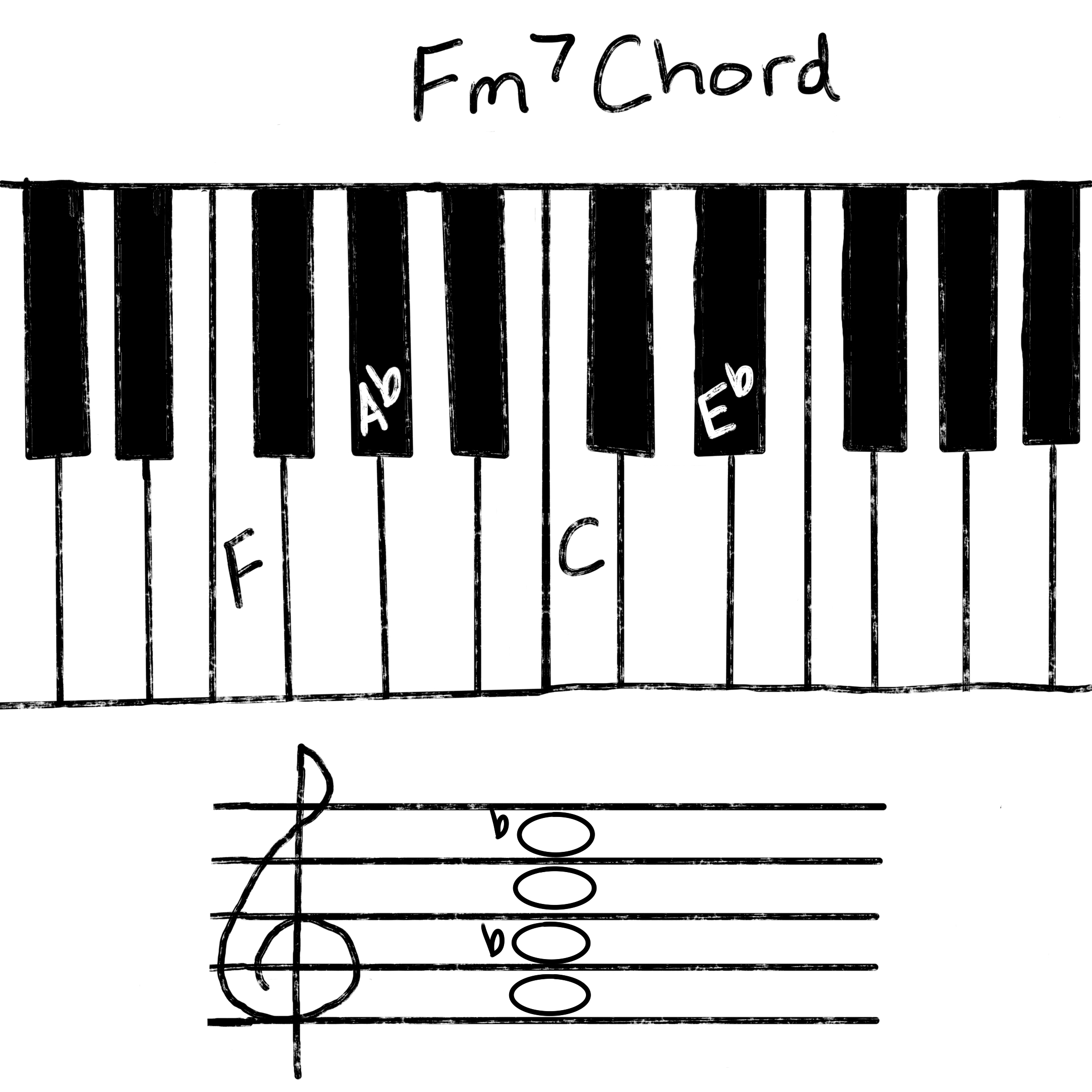
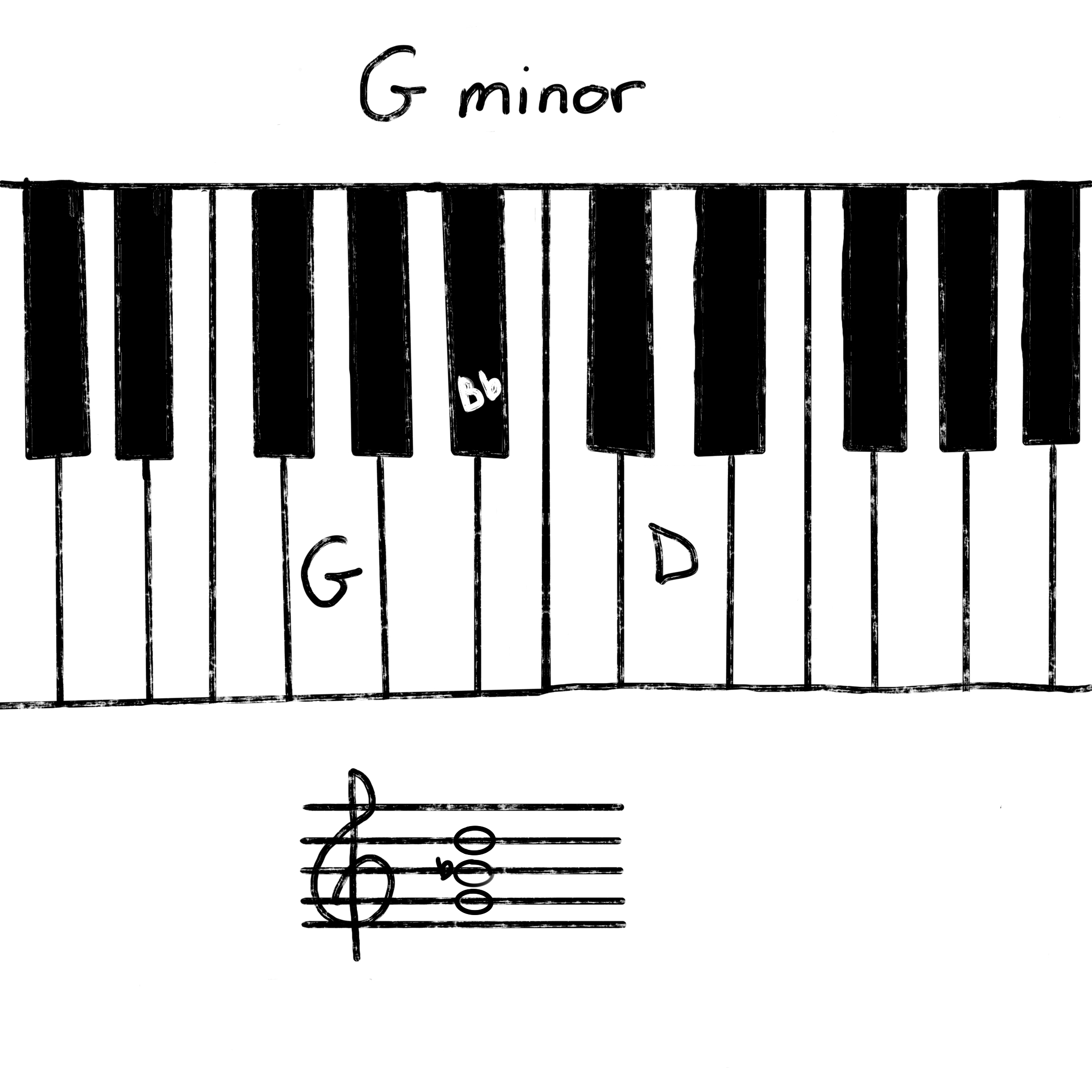
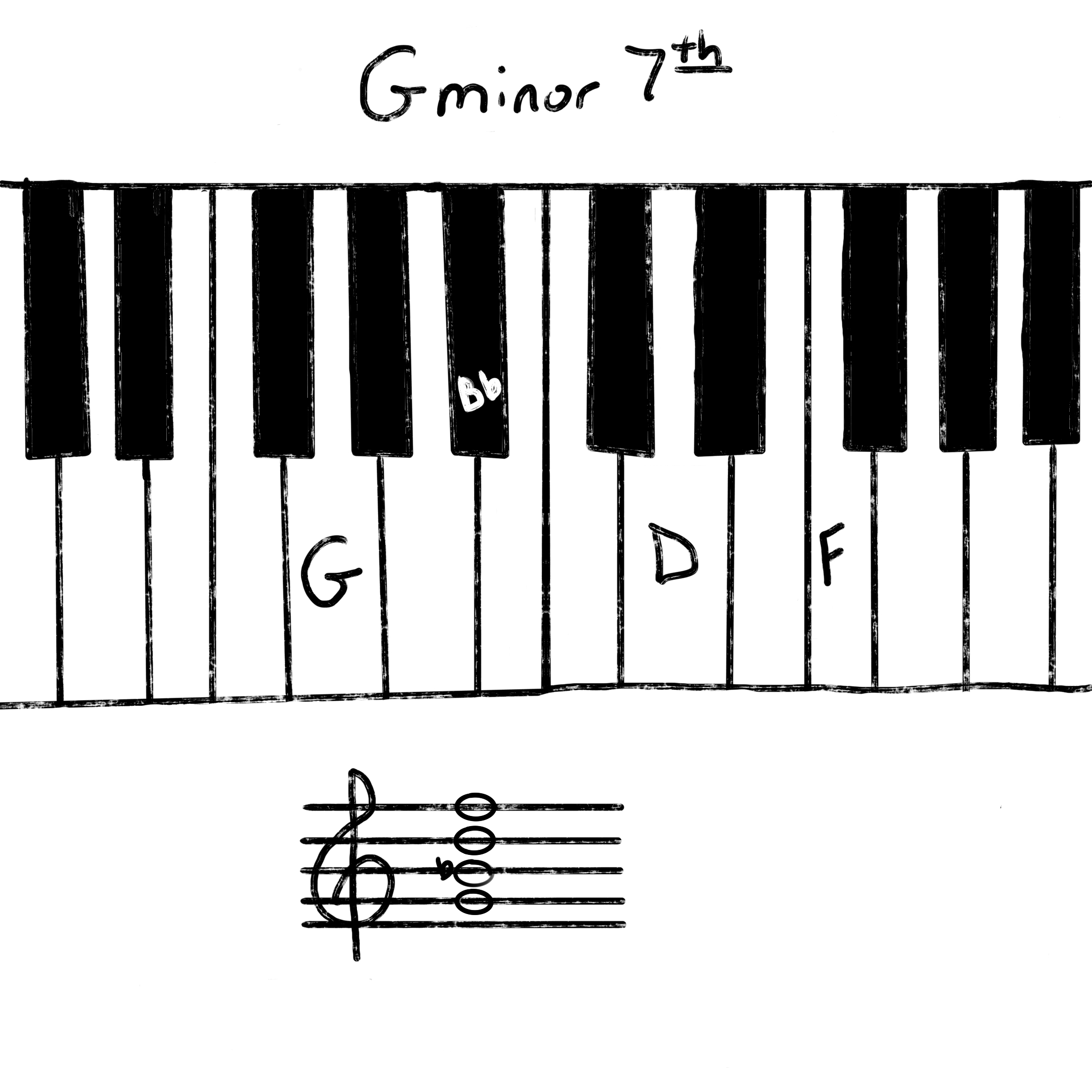
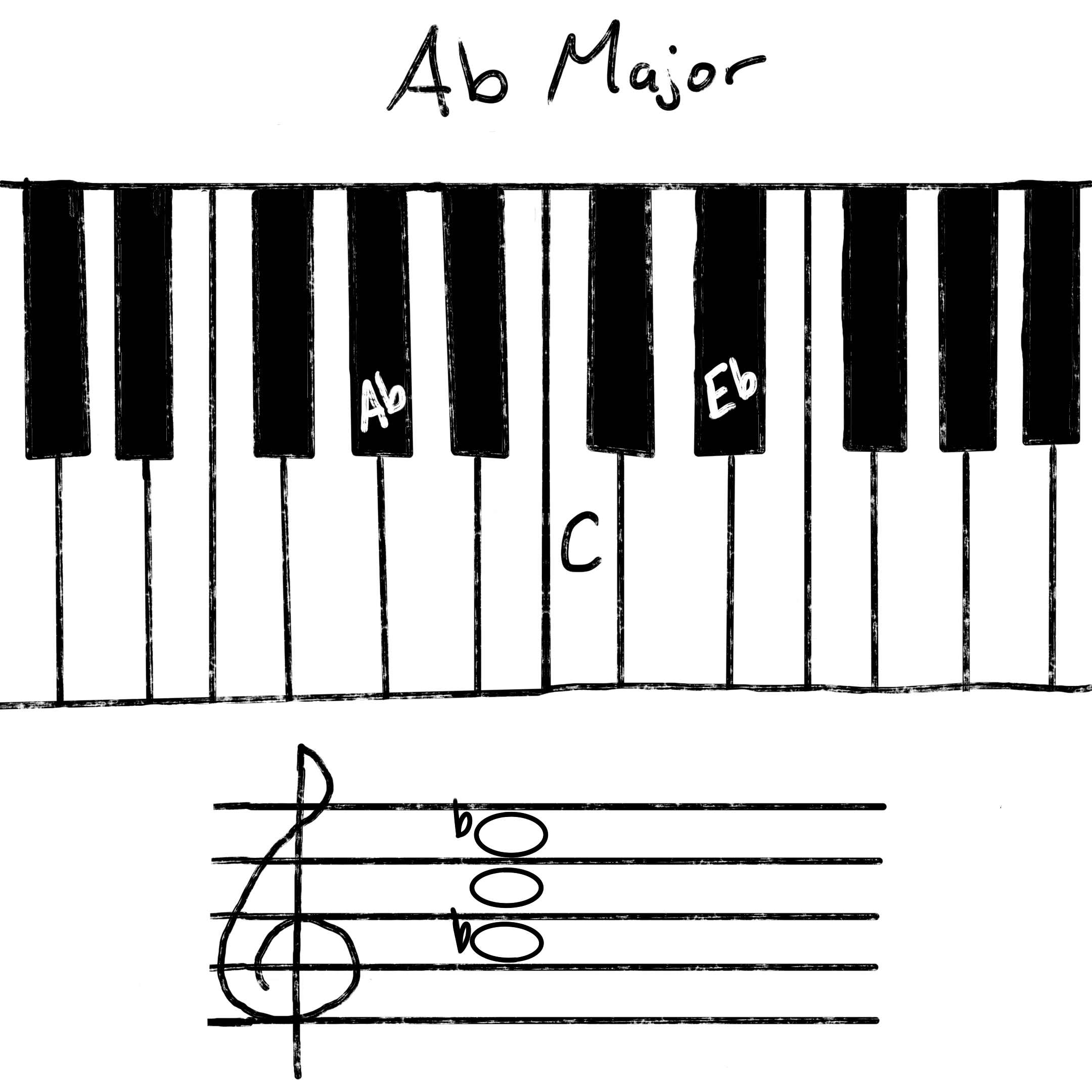
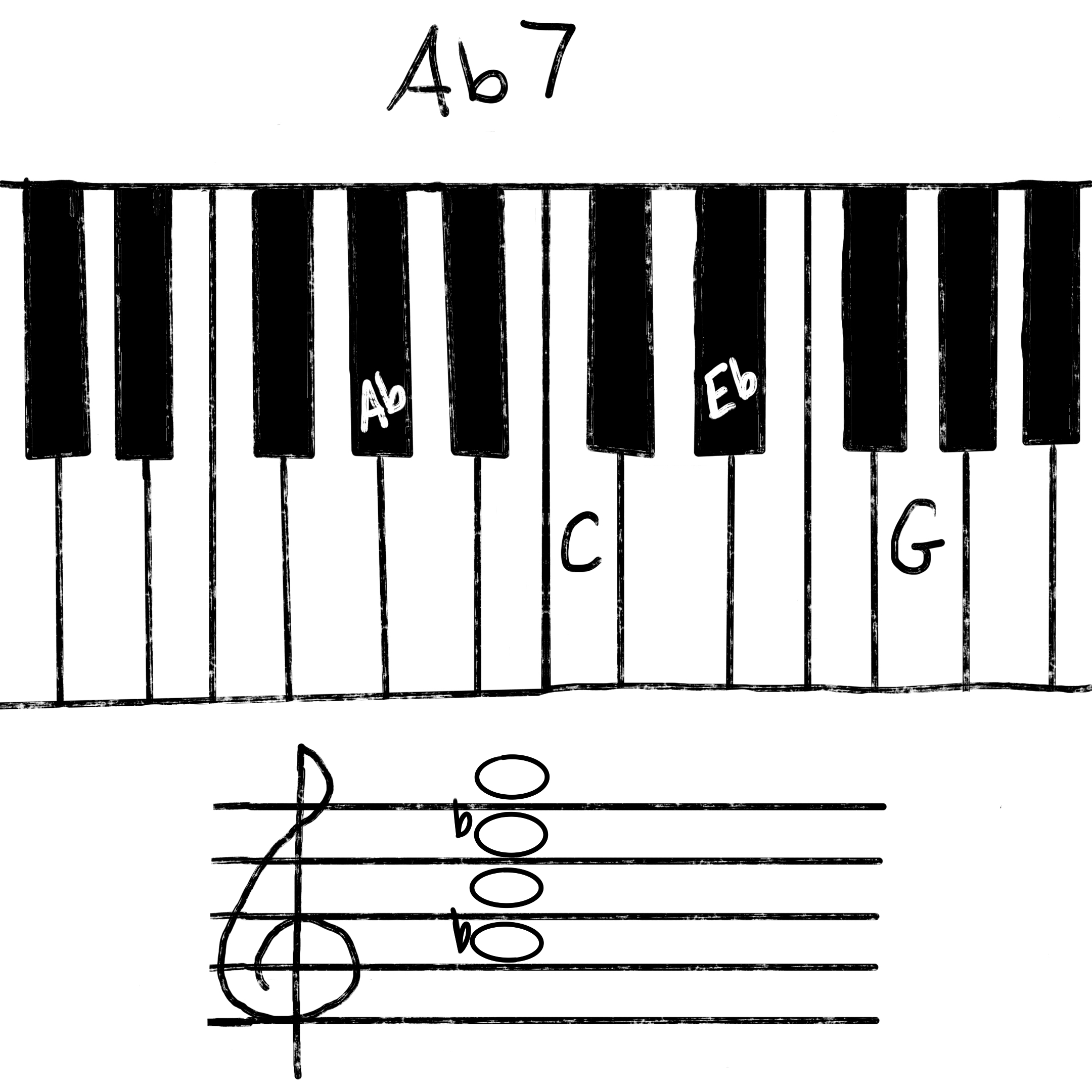
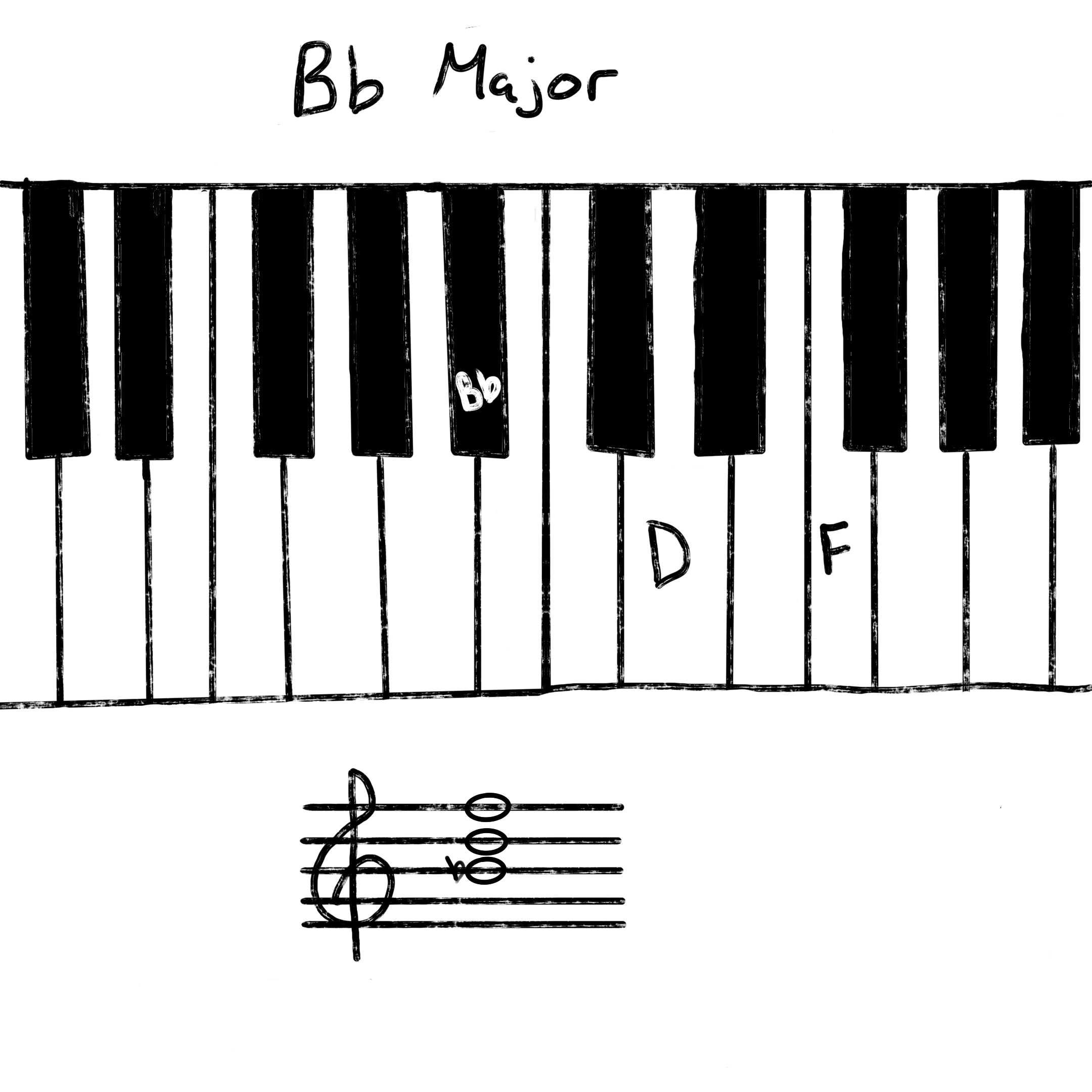
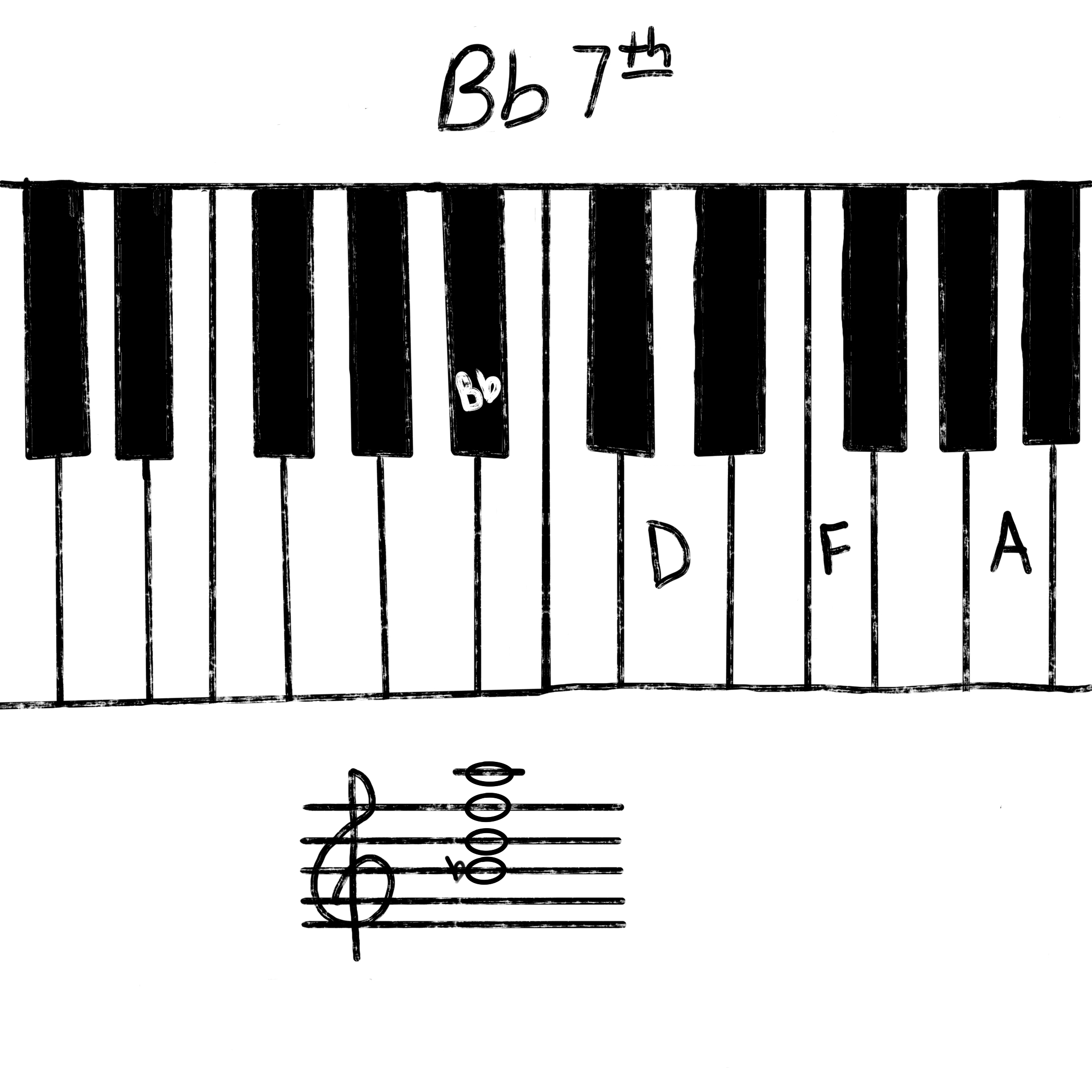
Inversions
You may or may not have heard about inversions. They are not nearly as intimidating as they may sound. In fact, they are quite simple. Inversions are just the notes of a chord played in different orders.
For example, the notes of Cm are C – Eb – G. This is known as the first inversion. If you want to play C minor second inversion, you move the C note up to the next highest octave. It will look like Eb – G – C. Finally, the third inversion will move the Eb note up past the C and look like G – C – Eb.
This is what it would look like on a keyboard:
| Inversion | 1st | 2nd | 3rd |
| Chord Formula | C – Eb – G | Eb – G – C | G – C – Eb |
First Inversion
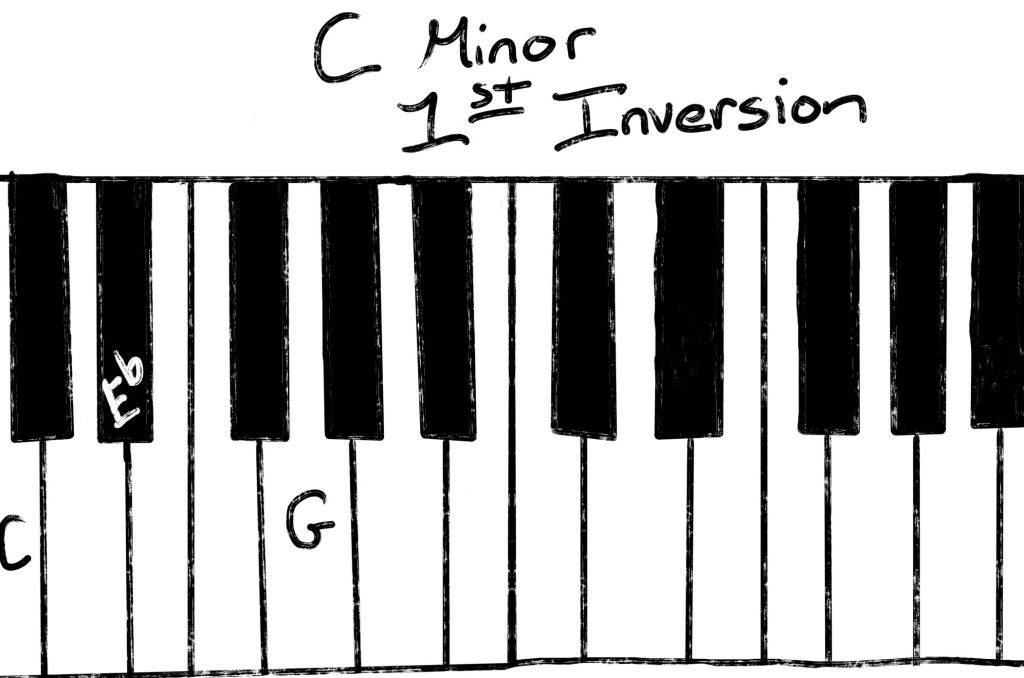
Second Inversion
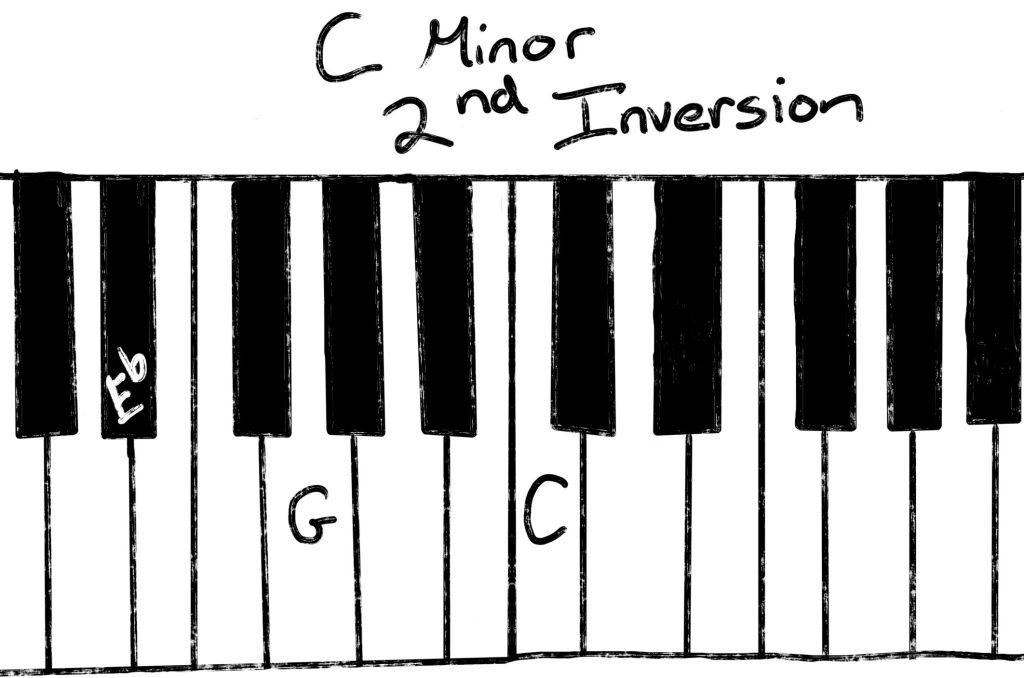
Third Inversion
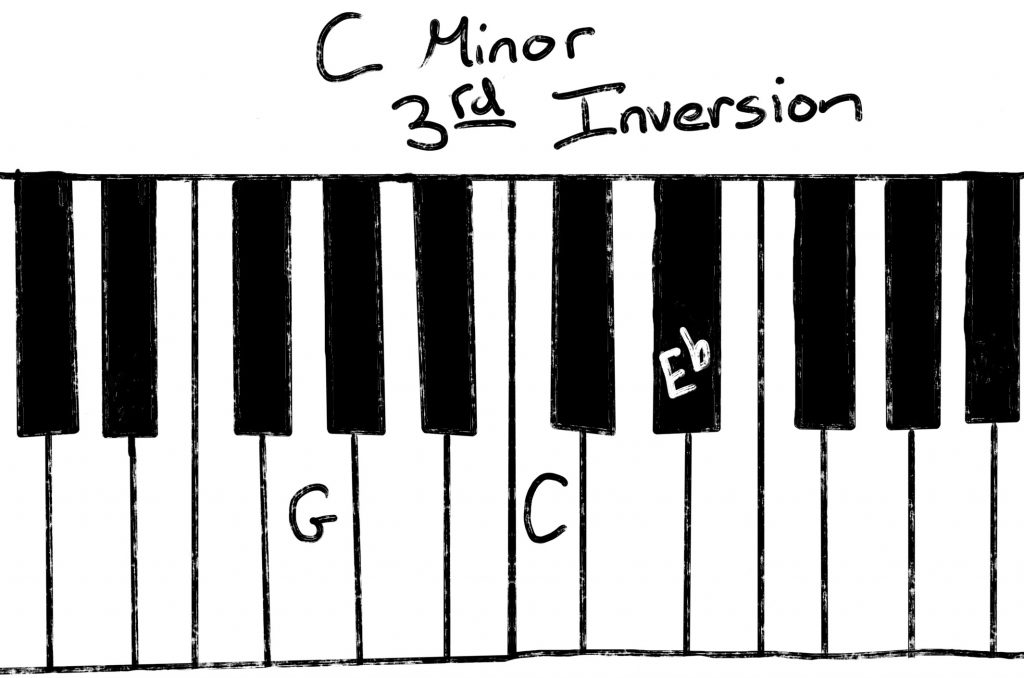
Modified Chords
Modified chords are chords that stray from the normal I – III/bIII – V format. That just means we will use other notes in addition to the standard triad.
add Chords
One common modified chord is the add chord. You probably recognize the chords with names like Eadd4, or Cmadd9. To build these chords, you simply just add the note into the chord’s note sequence.
To find which notes match with which numbers, we have to map them out. It’s easy to do. Check out the diagram below to see how.
You start with your root note and move up the keyboard, labeling as you go.
| 1 | C |
| 2 | D |
| 3 | Eb |
| 4 | F |
| 5 | G |
| 6 | Ab |
| 7 | Bb |
| 8 | C |
| 9 | D |
| 10 | Eb |
| 11 | F |
| 12 | G |
| 13 | Ab |
The 2, 4, 7, and 13 notes are in bold above. That is because these are the most likely notes to be used in add chords. The reason being is that the 1/8, 3/10, and 5/12 would just be additional voicings of the I – III – V notes in the original chord triad.
Let’s build a Cmadd4 chord. We know a Cm is C – Eb – G. If we want to make a Cmadd4 we just add in an F, or 4 (IV) note. The new chord would look like C – Eb – F – G.
You’ll notice the notes start to repeat after note 8 but the numbers keep going to 13. Those notes work similarly to inversions. Meaning, the 2 and 9, 4 and 11, and 6 and 13 notes, are all the same.
For example, the difference between a Cmadd4 and Cmadd13 is where the F note goes. A Cmadd13 places the F note in the next highest octave. It will look like this C – Eb – G – F.
The C Minor Scale
This is how the C minor scale looks on both a keyboard and a music staff.
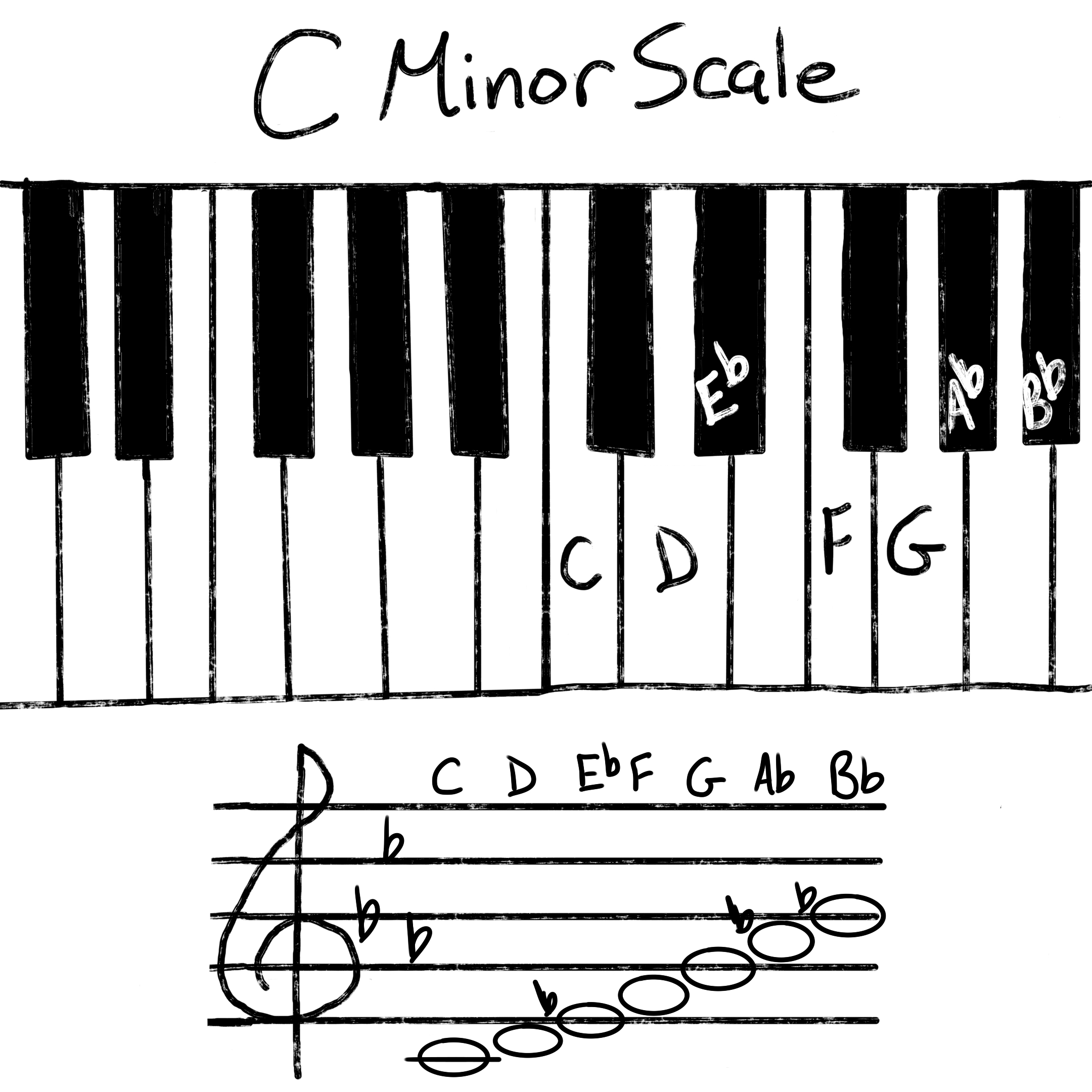
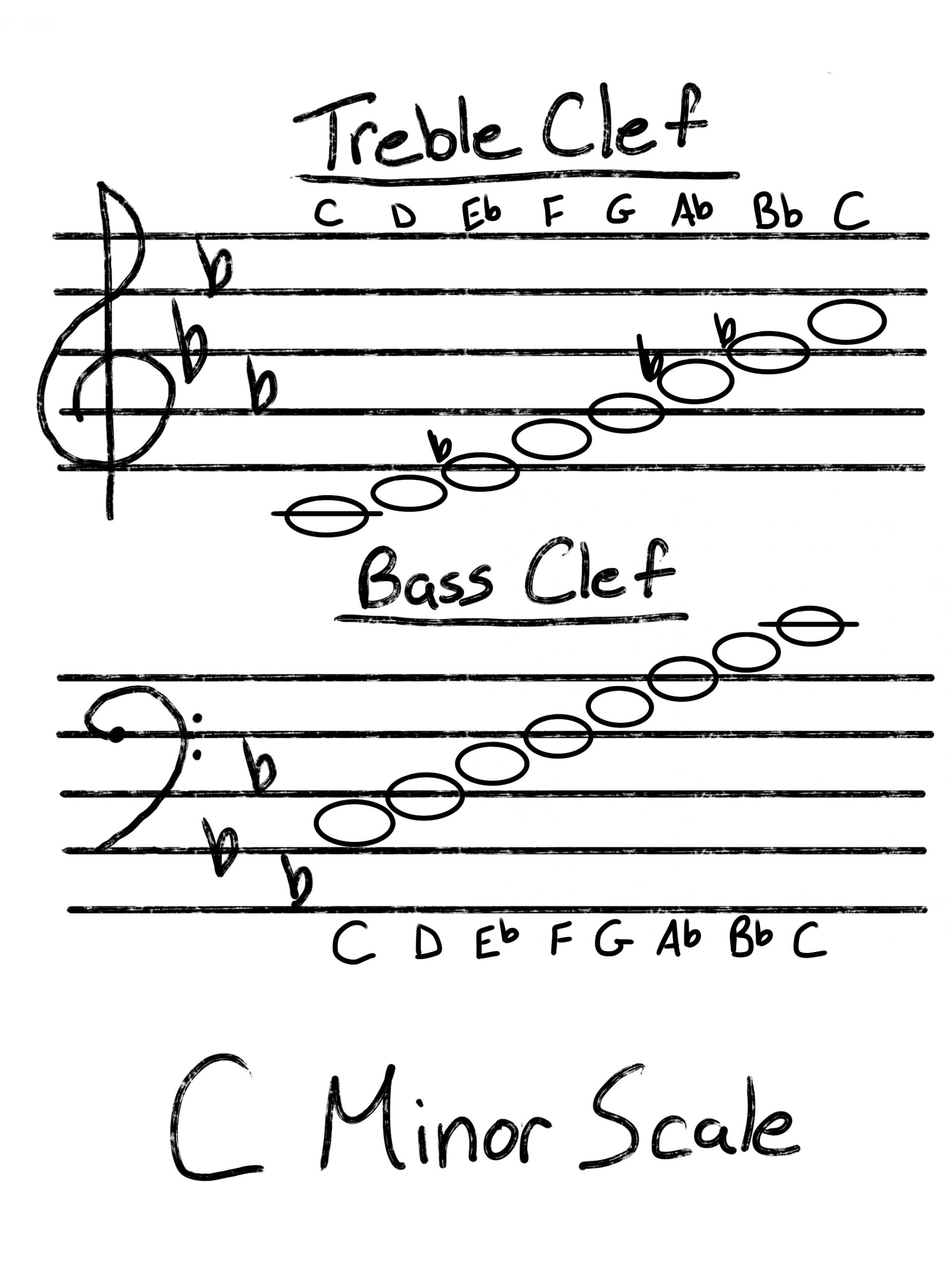
Song In C Minor
Playing in C minor is not as difficult as you might think. Here are a whole bunch of songs that you probably already know using the chords of C minor. Try some of them out!
- Rolling In The Deep by Adele
- Graveyard Disciples by Black Label Society
- You Give Love A Bad Name by Bon Jovi
- Open Your Eyes by Disturbed
- I Need Your Love by Calvin Harris
- Along The Watchtower by Jimi Hendrix
- She Treats Me Well by Ben Howard
- I Predict A Riot by Kaiser Cheifs
- The End Of Heartache by Killswitch Engage
- Forgotten by Avril Lavigne
- The Little Things Give You Away by Linkin Park
- Am I Wrong by Nico & Vinz
- 9,000 Miles by Pendulum
- Hey by Red Hot Chili Peppers
- I’m A Mess by Ed Sheeran
- Eye of the Tiger by Survivor
- Dancing With Our Hands Tied by Taylor Swift
Wrap Up!
Hopefully, you were able to pull some new knowledge out of this lesson. You should be able to build and play the chords in C minor. You should also have a solid understanding of how the notes of C minor work together.
Good luck and happy playing!